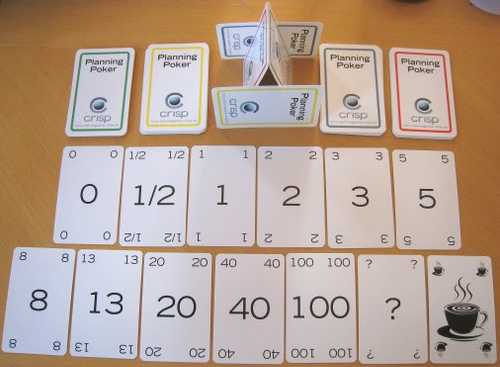Agile Methodologies
Development Practice
Published on April 16, 2021
What is to be Agile
Early in the Development Practice course, we looked at different development methods, and in particular the Agile methods. In my blog post I compared them and reflected on my professional experience with them, concluding that no single one of them is perfect and a custom, flexible solution should be used. This conclusion was further confirmed by Belinda Waldock in the Agile Movement and Practice presentation (2021). However, this should never be a final decision. Just like teams are supposed to work iteratively on the problems they are solving, they should work iteratively on their processes in order to optimise and improve them.

User Stories & Requirements
User stories are a very interesting and slightly contentious topic for me. I have used them many times during my professional career, but never for an extended period of time. Mainly due to the quality of the user stories as it can have a significant effect on their usefulness (Lucassen, et al., 2015). The idea behind user stories is rather simple to understand, which tricks most people into thinking that writing them is also easy. However, this is not always the case (Hallmann, 2020).
The main purpose of user stories is to convey requirements. However, the most important part of a user story is the third row - the reason. A developer should always focus on the problem that they are trying to solve and do so in the most appropriate way. The idea that the "Why" is the most important question is adopted in a wide variety of industries to increase customer and employee engagement (Sinek, 2009).
Rapid Ideation as a User Story
My first rapid ideation project was mostly focused on learnings, so I will transform my second project into a couple of user stories.
As a teacher, I want to share a game about the gender pay gap with my students, So that the next generation of leaders is aware of the challenges.
As a CxO, I want to educate the managerial staff of the company in a fun way, So that they are aware and deal better with the gender pay gap problem.
These User Stories are not of the best quality. While I have experience, I've not used them enough to become proficient in the style and writing them in such a way that would yield the most benefit for the team. This could be an area for me to improve in, however, if this trend of avoiding user stories for more fluidly structured requirements continues, the value of this skill is not enough for me to focus on improving it.

Planning and estimation
Any team has to plan and estimate the work they do. Sometimes, however, the team lacks knowledge or understanding of the problem or the tools needed to solve the problem at hand in order to estimate how much effort would take them to complete it. In such cases, teams can create a Spike to investigate. Agile spikes are time-limited tasks that aim at increasing understanding and knowledge of a particular area and help the estimation of other stories (Al Hashimi, Gravell, 2019). The time-limited nature of the spikes combined with other agile practices such as the planning poker help to prevent analysis paralysis and enable teams to move fast.
Agile teams usually size their tasks using story points or ideal days (Cohn, 2005). The story points are meant to represent not time, but a mixture of complexity and risk (Cohn, 2016). In my experience, the two are very hard to differentiate for most teams and they end up developing a mental link between the story point values and the rough amount of time a task would take. So far in my career, this behaviour causes discrepancies in the story point estimation making the team velocity fluctuate from week to week. However, once the team members are aware of it and they actively try to avoid it the weekly velocity returns to normal.

In my personal projects, I tend to avoid working in sprints defined by an amount of time and instead, I work on a set of features or stories I want to release that would yield the highest value to the users. This is due to the lack of consistent time I work on those projects every week, which makes it increasingly difficult to estimate, easy to miss deadlines and increase burnout rate. So far this has been a successful tactic, however, it should only be applied where time spent working is not consistent. In my game development practice, I plan on assigning how much time I spend each week to avoid overworking, which means that I have to plan and estimate tasks normally.
The biggest challenge I will have will be having to wear many hats by myself. The most difficult role in my opinion is one of the product owners. This is due to the inherent bias when one is involved in and actively working on a project. Taking a step back and looking at things holistically is something I need further practice with. To help me with that I have been trying to be close to and understand the thought process of the product owners in my current projects at Skyscanner. By the time I get to work on my own game development projects, I hope to have learned enough to be able to achieve this unbiased user-centred point of view required by product owners.
References
Al Hashimi, H. and Gravell, A.M., 2019, November. A critical review of the use of spikes in agile software development. In The Fourteenth International Conference on Software Engineering Advances (p. 166).
Cohn, M., 2005. Agile estimating and planning. Pearson Education.
Cohn, M., 2016. What Are Story Points?. Mountain Goat Software, 23.
Grenning, J., 2002. Planning poker or how to avoid analysis paralysis while release planning. Hawthorn Woods: Renaissance Software Consulting, 3, pp.22-23.
Hallmann, D., 2020, June. “I Don’t Understand!”: Toward a Model to Evaluate the Role of User Story Quality. In International Conference on Agile Software Development (pp. 103-112). Springer, Cham.
Lucassen, G., Dalpiaz, F., Van Der Werf, J.M.E. and Brinkkemper, S., 2015, August. Forging high-quality user stories: towards a discipline for agile requirements. In 2015 IEEE 23rd international requirements engineering conference (RE) (pp. 126-135). IEEE.
Sinek, S., 2009. How great leaders inspire action. [online] Ted.com. Available at: https://www.ted.com/talks/simon_sinek_how_great_leaders_inspire_action?language=en [Accessed 23 April 2021].
Waldock, B., 2021. Week 10: Belinda Waldock on the Agile Movement and Practice. [online] Falmouth Flex. Available at: https://flex.falmouth.ac.uk/courses/911/pages/week-10-belinda-waldock-on-the-agile-movement-and-practice?module_item_id=49212 [Accessed 16 April 2021].
If you like it, share it!
